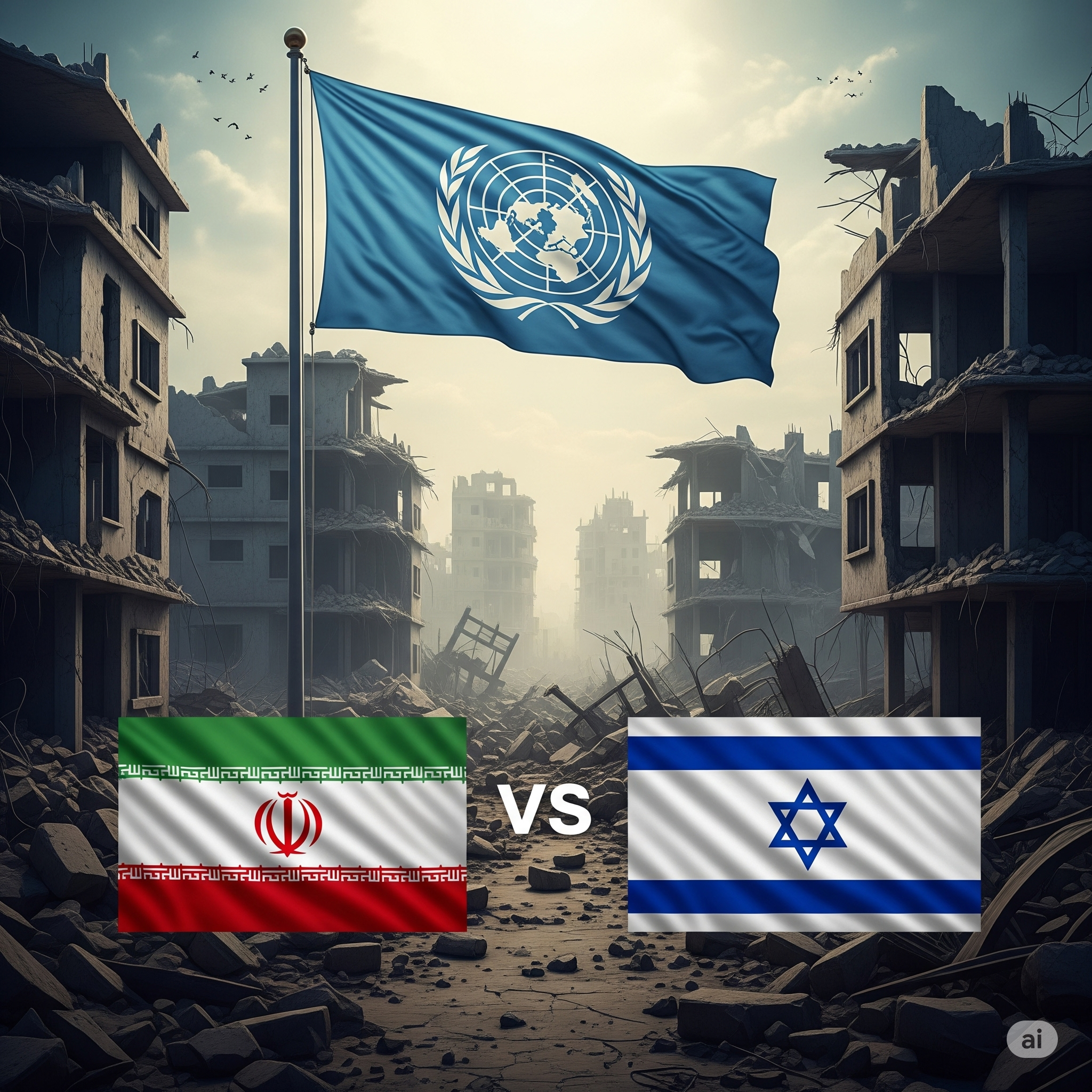For a long time, Iran and Israel have aimed at each other in the fog of a 'shadow war.' This long-standing conflict escalated into an unprecedented phase of direct confrontation on June 13, 2025, with Israel's large-scale preemptive strike and Iran's immediate retaliation. The Middle East, seemingly sucked into a maelstrom, faces even greater upheaval with direct US military intervention, the repercussions of which are uncontrollably expanding. This article aims to go beyond a simple news briefing to delve deeply into the fundamental causes of this unavoidable conflict, America's choice that could be a turning point in history, and the dark shadow cast over the future of the Middle East. 🌊
1. From Friends to Foes: The Origins of the Iran-Israel Conflict 🕰️
It's hard to believe, but Iran and Israel were once nations that extended hands to each other. The irony of history begins here.
1.1. From Amity to Enmity: Before and After the 1979 Islamic Revolution
1.1.1. The Pahlavi Dynasty's 'Periphery Doctrine' 🤝
Before the 1979 Islamic Revolution, Iran, under the pro-Western Pahlavi dynasty, was an important partner for Israel. In 1948, despite Arab opposition, Iran became the second Muslim-majority country after Turkey to officially recognize Israel. This was more than a political gesture; it signified a deep military alliance, including economic cooperation and even a joint ballistic missile development project ('Project Flower'). At that time, Iran viewed Israel as part of a 'periphery doctrine' to avoid isolation amidst Arab hostility, and Israel, in turn, valued cooperation with non-Arab Iran. Israel even supplied arms to Iran during the Iran-Iraq War in the 1980s, a testament to a relationship that seems worlds away today.
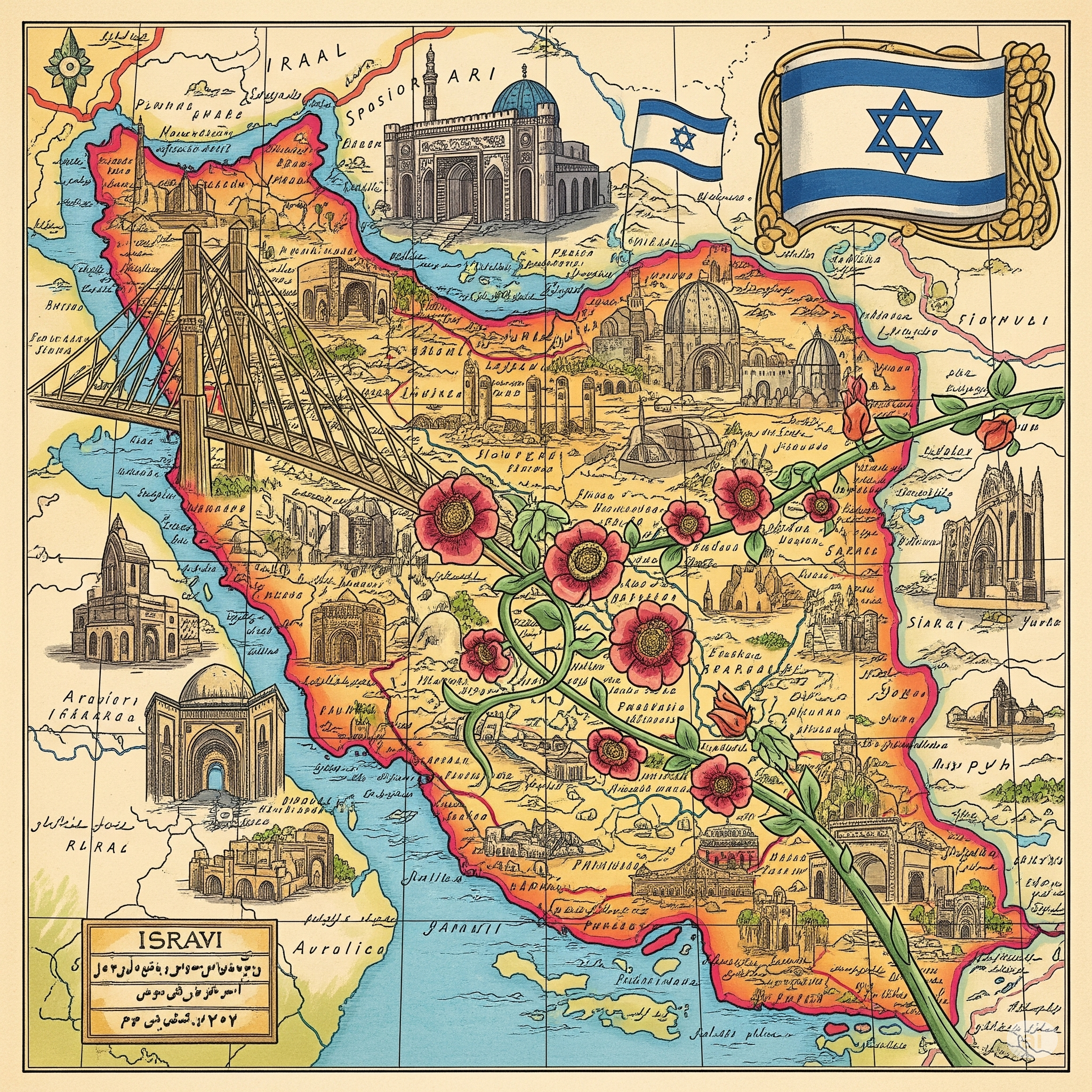
1.1.2. The Islamic Revolution: The Beginning of an Ideological Break Ayatollah's Decree 📜
In 1979, the Islamic Revolution led by Ayatollah Khomeini upended everything. The Pahlavi dynasty was ousted, and the newly established Islamic Republic branded Israel as an "enemy of Islam" and the "Little Satan," severing all ties. Iran's denial of Israel's legitimacy and its foreign policy goal of Israel's destruction completely reversed the former strategic alliance, becoming the core reason for Iran's deep-seated animosity towards Israel.
1.2. The Unfolding of the 'Shadow War': Proxy Forces and the Nuclear Program
1.2.1. Formation of the 'Axis of Resistance': Hezbollah, Hamas, Houthi Rebels Proxy Armies ⚔️
Internationally isolated after the revolution, Iran adopted a new strategy to expand its influence and counter Israel: forming an 'Axis of Resistance' by uniting pro-Iranian armed groups across the Middle East. Hezbollah in Lebanon, Hamas and Islamic Jihad in Palestine, and the Houthi rebels in Yemen are prime examples. Iran provided them with weapons, funding, and training, waging a decades-long 'shadow war' to indirectly pressure Israel. Terror attacks linked to these groups in the 1990s, such as the bombings of Israeli-related facilities in Argentina, signaled the beginning of this era.
1.2.2. The Nuclear Program: Existential Threat and Israel's Preemptive Response Nuclear Gambit ☢️
As Iran's nuclear program became more apparent in the 2000s, tensions between the two nations approached a critical point. Israel viewed Iran's nuclear armament as an unacceptable 'existential threat.' Inflammatory statements from former Iranian President Ahmadinejad, such as "Israel must be wiped off the map," further fueled these fears. Consequently, Israel employed various unofficial means, including assassinating Iranian nuclear scientists and launching cyberattacks like Stuxnet against nuclear facilities, in a desperate attempt to halt Iran's nuclear development. Even the 2015 Iran nuclear deal (JCPOA) was seen as insufficient by Israel, and the Trump administration's withdrawal from the deal in 2018 only accelerated Iran's nuclear activities and Israel's more aggressive stance. Iran is currently known to have enriched uranium up to 60%, close to weapons-grade levels.
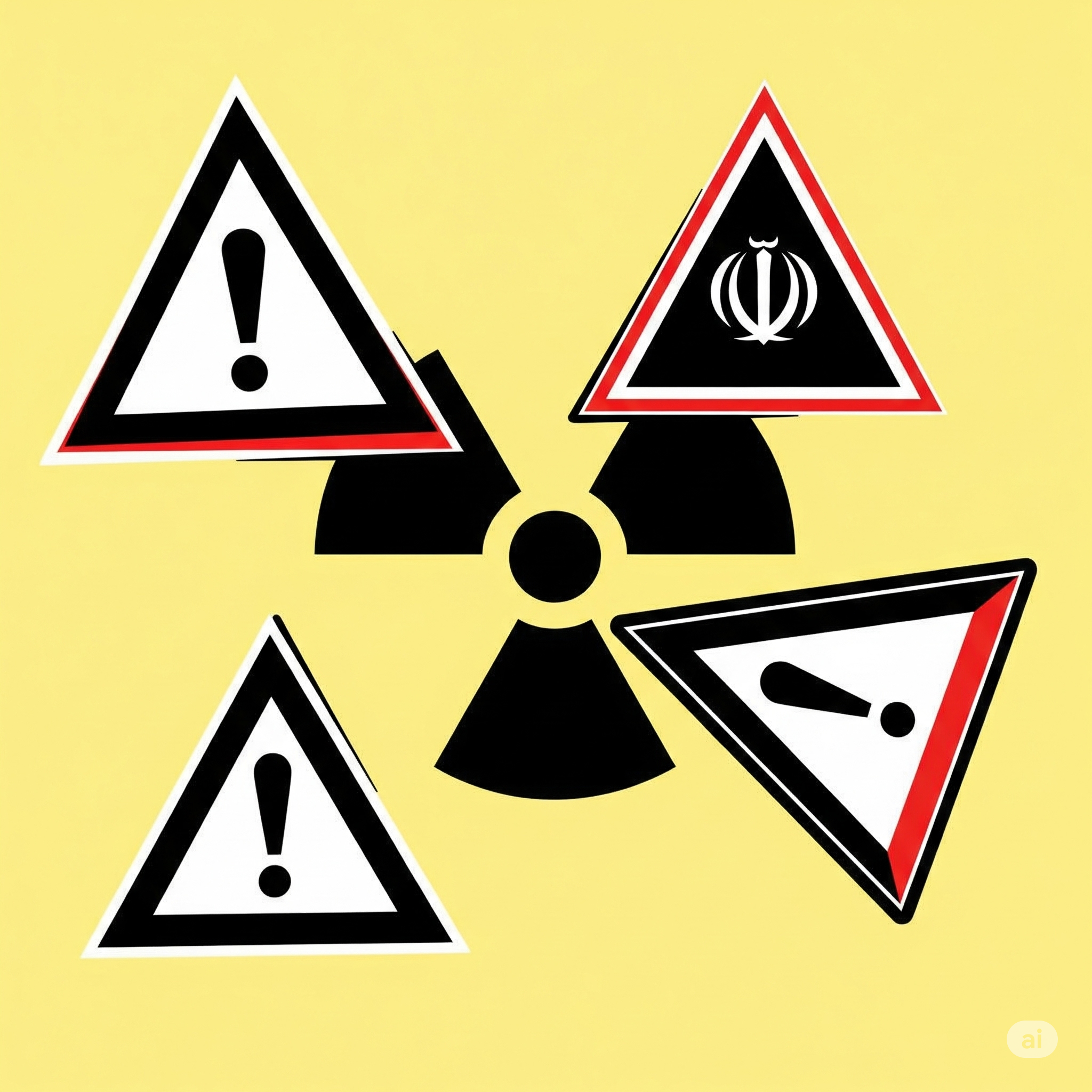
1.2.3. The Gaza War as a Catalyst: Weakening Proxies and a Prelude to Direct Conflict Gaza Catalyst 🇵🇸🇮🇱
The Gaza War, which erupted in October 2023, served as a crucial catalyst in shifting the 'shadow war' towards direct confrontation. Israel blamed Iran for Hamas's surprise attack and dealt significant blows to Iran's key proxies, Hamas and Hezbollah, through its military operations. The collapse of Syria's Assad regime further weakened Iran's 'Axis of Resistance.' With its proxy buffer zone diminishing, Iran felt compelled to act directly to protect its security interests, and Israel's bombing of the Iranian consulate in Damascus in April 2024 was the spark that ignited the direct military clash.
"Once war begins, it is difficult to stop. The moment the first bomb drops, diplomacy is thrown out the window." – Anonymous Diplomatic Strategist (Fictional Quote)
2. Shadows Lift, Fists Fly: The 2025 Direct Confrontation and Its Aftermath 💥
Decades of clandestine struggle and indirect clashes finally erupted into direct attacks aimed at each other's heartlands.
2.1. Israel's Large-Scale Preemptive Strike: 'Operation Rising Lion' 🦁
In the early hours of June 13, 2025, Israel launched 'Operation Rising Lion,' an unprecedented large-scale preemptive strike targeting Iran's nuclear and military facilities. This operation was not mere retaliation but a clear attempt to cripple Iran's nuclear capabilities and weaken its military power.
2.1.1. Key Targets: Nuclear Facilities and Military Leadership 'Decapitation Strike' 🎯
The strike's spearhead was aimed at the Natanz nuclear facility, the heart of Iran's nuclear development, and its military leadership. Top commanders of the IRGC and experts in nuclear and advanced weapons development were eliminated, dealing a crippling blow to Iran's military and technological capabilities. The success of this so-called 'decapitation strike' inflicted a painful loss on Iran.
2.1.2. Attack Methods and Technological Superiority: AI, Stealth, and Bunker Busters 💣
Israel employed a complex attack strategy using drones, fighter jets, and precision weapons smuggled into Iran. AI-driven target selection and intelligence analysis, along with the US-supplied B-2 stealth bombers and 30,000-pound bunker buster bombs (GBU-57 A/B), played a decisive role in neutralizing Iran's air defenses and deeply buried nuclear facilities. This was reportedly the first combat use of this type of bunker buster.
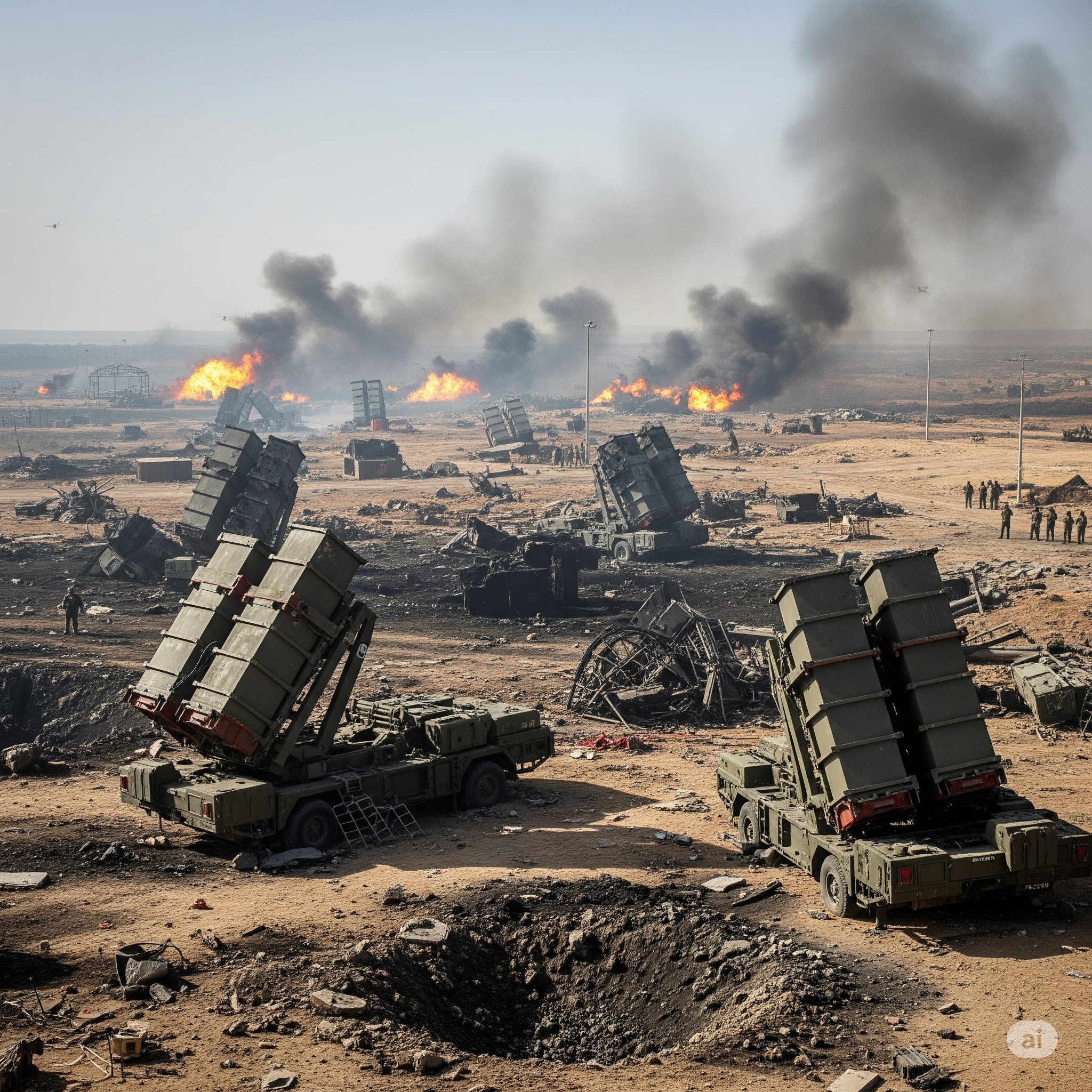
2.2. Iran's Retaliatory Strike: 'Operation True Promise 3' Retaliation Wave 🌊
Iran's response to Israel's attack was swift and fierce. Dubbed 'Operation True Promise 3,' the retaliatory strike involved hundreds of missiles and drones directly targeting Israeli territory.
2.2.1. Missile and Drone Attack Patterns and Interception Rates: 99% Defense? 🛡️
Israel claimed its multi-layered air defense system (Iron Dome, Arrow, etc.) intercepted 99% of Iranian projectiles. However, some missiles breached the defenses, hitting civilian areas in major cities like Tel Aviv and Haifa. Iran is estimated to have launched around 450 missiles and 1,000 drones.
2.2.2. Strikes on Civilian Areas and Key Infrastructure: War Crime Allegations ⚖️
Iran's attacks targeted not only military installations but also civilian residential areas and critical infrastructure. A refinery in Haifa, the Tel Aviv Stock Exchange, and even a hospital in Beersheba were hit, sparking allegations of war crimes. The actual extent of the damage may have been downplayed due to Israeli media censorship.
2.3. Human and Material Toll of the Conflict: The Grim Numbers 💔
This direct confrontation left indelible scars on both nations.
| Category | Damage on Iranian Side | Damage on Israeli Side |
|---|---|---|
| Fatalities | At least 657, including 263 civilians (Other sources: 430+) |
At least 24 (Other sources: 25+) |
| Injuries | 2,000+ (Other sources: 3,500+) |
Hundreds (Other sources: 2,517+) |
| Key Facility Damage |
|
|
| Specifics | Severe blow to military command structure and nuclear development capabilities. | Civilian casualties in major cities, infrastructure loss, potential media censorship. |
* The figures in the table above are estimates from various sources and may not be exact.
3. Enter Big Brother?: US Intervention, Motives, and Significance 🇺🇸
Amidst the crisis of an all-out war between Israel and Iran, the United States finally took direct military action. Complex calculations and long-standing alliances are intertwined in its background.
3.1. US Middle East Policy and Special Relationship with Israel: An Unbreakable Bond 🔗
3.1.1. Historical 'Protector' Role and Strategic Asset
Since being the first to recognize Israel's statehood in 1948, the US has acted as Israel's steadfast 'protector.' During the Cold War, Israel's value as a 'strategic asset' in the Middle East to counter Soviet influence was paramount to the US. This historical relationship continues today, with Israeli security considered a core US interest in its Middle East policy.
3.1.2. Massive Military and Economic Aid: Alliance by Numbers 💰
US support for Israel is not just verbal. Cumulative aid reached $150 billion by 2022, and in the past year alone, amid the Gaza war, a staggering $17.9 billion in military aid was provided. The US has also used its veto power in the UN Security Council 42 times to block resolutions critical of Israel, demonstrating its unwavering support. This backing is a cornerstone of Israel's military strength and its assertive policy towards Iran.
3.2. The Trump Administration's Decision for Direct Intervention: "Best Opportunity" or "Risky Gamble"? 🎲
On June 21, 2025, US President Donald Trump ordered an attack on three major Iranian nuclear facilities (Fordo, Natanz, and Isfahan). This came just days after his statement about deciding on intervention within two weeks.
3.2.1. Goal of 'Destroying' Iran's Nuclear Program and Extension of 'Maximum Pressure'
The primary goal of US intervention was clear: the complete destruction of Iran's nuclear program. President Trump declared that Iran's key nuclear facilities were "totally eliminated," underscoring his resolve not to allow Iran to possess nuclear weapons. This can be seen as an extension of his administration's policy, which began with the unilateral withdrawal from the JCPOA in 2018 and the 'maximum pressure campaign.'
3.2.2. Israel's 'Groundwork' and US Perception of a 'Golden Opportunity'
The US decision was based on the assessment by US and Israeli officials that Israel's preemptive strikes had significantly damaged Iran's air defenses and nuclear facilities, thereby "paving the ground" for US intervention. They saw this as the "best opportunity" for US advanced weaponry to permanently neutralize Iran's nuclear program. Israeli Prime Minister Netanyahu thanked the US for its "bold decision," stating it would "change history."
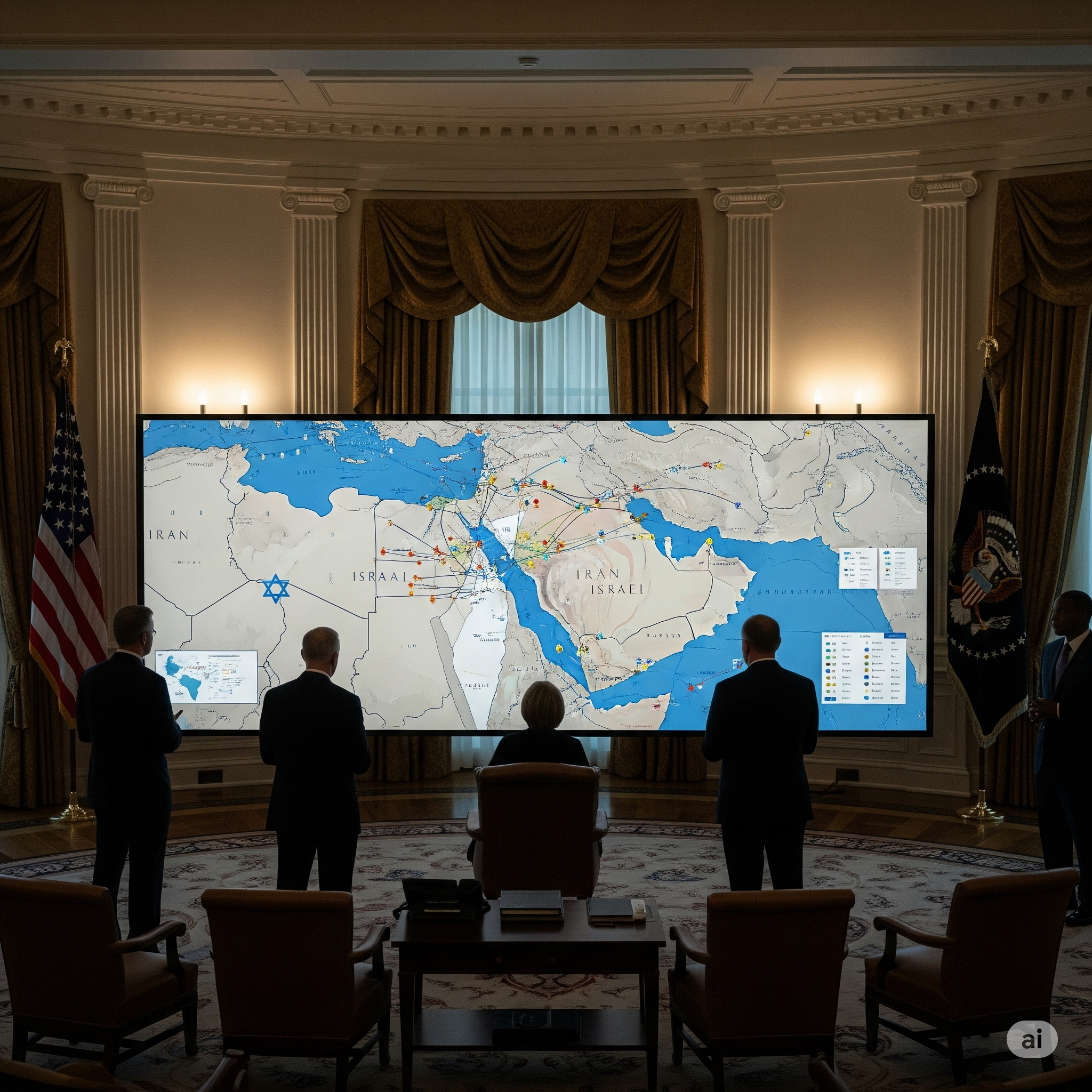
3.2.3. US Domestic Political Considerations vs. 'Endless Wars' Rhetoric
Interestingly, President Trump had previously criticized 'endless wars' and advocated for non-interventionism. This decision could be seen as a "risky gamble" that directly contradicts his past rhetoric. While there were attempts at a diplomatic solution, pressure from Israel and hawkish Republicans, combined with the calculation of a unique chance to neutralize Iran's nuclear program, ultimately led to military intervention. This exemplifies how US foreign policy can be swayed by domestic politics and the influence of strong allies.
3.3. Repercussions of US Intervention: Eye of the Storm 🌪️
3.3.1. Iran's Strong Backlash and Potential Retaliation: Warning of "Eternal Consequences"
Iran condemned the US attack as a "serious violation of the UN Charter, international law, and the NPT," and a crossing of a "very big red line," warning of "eternal consequences." Iran's potential retaliatory options, including attacks on US bases in the Middle East, a blockade of the Strait of Hormuz, and an acceleration of its nuclear weapons program, could lead to unpredictable escalation.
3.3.2. International Concerns and Limits of Mediation Efforts: Whither Diplomacy? 🤷
The UN Secretary-General and the international community expressed deep concern, urging restraint. However, with heightened military tensions, diplomatic efforts are losing traction. Talks in Geneva between Iranian and Western officials ended without a breakthrough, highlighting how military action is undermining diplomatic avenues.
3.3.3. Reshaping Middle East Security Order and Intensified Great Power Proxy Competition: A New Chessboard геополитика
US intervention is poised to reshape the Middle East security order. Iran is likely to further strengthen ties with China and Russia to counter US pressure. China is expanding its diplomatic influence by mediating Saudi-Iran normalization, and movements like BRICS expansion suggest the Middle East could become a new arena for US vs. Russia/China proxy competition, complicating existing alliances and regional dynamics.
Key Summary: A Vortex of Crisis 🌀
The Iran-Israel conflict, which began in earnest with the 1979 Iranian Islamic Revolution, evolved through decades of 'shadow war' fueled by nuclear ambitions and proxy support. In 2025, Israel's preemptive strike and Iran's retaliation marked the beginning of an era of direct confrontation. US military intervention further plunged the Middle East into an unpredictable future, profoundly impacting not just regional stability but also international security, great power relations, and the nuclear non-proliferation regime.
4. The Middle East on the Brink, and the World: Future Outlook and International Challenges 🌍
The Iran-Israel conflict and US intervention are spreading anxiety beyond the Middle East to the entire world. What scenarios lie ahead, and what challenges must we confront?
4.1. Escalation Potential and the Meaning of 'Red Lines': No More Room to Retreat? 🛑
The greatest concern is undoubtedly the potential for escalation to a full-blown war. If Iran, viewing the attack on its nuclear facilities as a 'red line' crossed, retaliates forcefully, an uncontrollable cycle of retribution could begin. Further Israeli attacks on nuclear reactors or an Iranian blockade of the Strait of Hormuz are considered 'ultimate red lines' that could trigger a global catastrophe.
4.2. Crisis of the Nuclear Non-Proliferation Regime: Is the NPT Just a Piece of Paper? 📜➡️🗑️
The Iranian Foreign Minister's comment that the "NPT failed to protect Iran" is ominous. If Iran, questioning the NPT's efficacy, openly accelerates its nuclear weapons development or withdraws from the treaty, it could trigger a nuclear domino effect in the Middle East, fatally undermining the global non-proliferation regime.
4.3. Information Warfare and Public Opinion Control: Where is the Truth? 📢🤫
Iran's internet blackout and Israel's warning messages in Farsi during this crisis starkly illustrate the importance of information warfare in modern conflict. While nations attempt to control information and shape public opinion to their advantage, such efforts only distort the true nature of the conflict and make peaceful resolution more difficult.
4.4. Humanitarian Crisis and Civilian Casualties: The Greatest Victims of War 😢
Numerous civilian casualties have already occurred on both sides. Indiscriminate attacks on urban areas, alleged use of cluster munitions, and the potential for radioactive leakage from attacked nuclear facilities could lead to an unimaginable humanitarian disaster. The international community must urgently devise measures for civilian protection and humanitarian aid.
4.5. Shifting Dynamics Among Great Powers: The Rise of China and Russia 🇨🇳🇷🇺
As international trust in US Middle East policy wanes, China is stepping up as a mediator, and Russia is strengthening military cooperation with Iran. This indicates that the Middle East is no longer solely under US influence but is transforming into a new arena for geopolitical competition within a multipolar international order.
Conclusion: A Turbulent Middle East, An Unpredictable Future 🌫️
The direct confrontation between Iran and Israel, coupled with US intervention, has ended the long era of 'shadow war' in the Middle East, ushering in an unpredictable new age. The conflict, rooted in ideological rifts since the 1979 Islamic Revolution, nuclear development, and regional hegemonic competition through proxies, has finally escalated to a disastrous direct clash. US intervention may have temporarily curbed Iran's nuclear capabilities, but it has also left behind embers of greater retaliation and escalation.
The crisis of the nuclear non-proliferation regime, the shadow of a humanitarian catastrophe, and a new proxy competition among great powers threaten not only Middle Eastern but global security. Now is the critical moment for the international community to recognize the limits of military solutions and exert strong diplomatic efforts to bring all parties back to dialogue and seek a sustainable, peaceful resolution. Otherwise, we may witness a historical tragedy where everyone loses. ✒️
